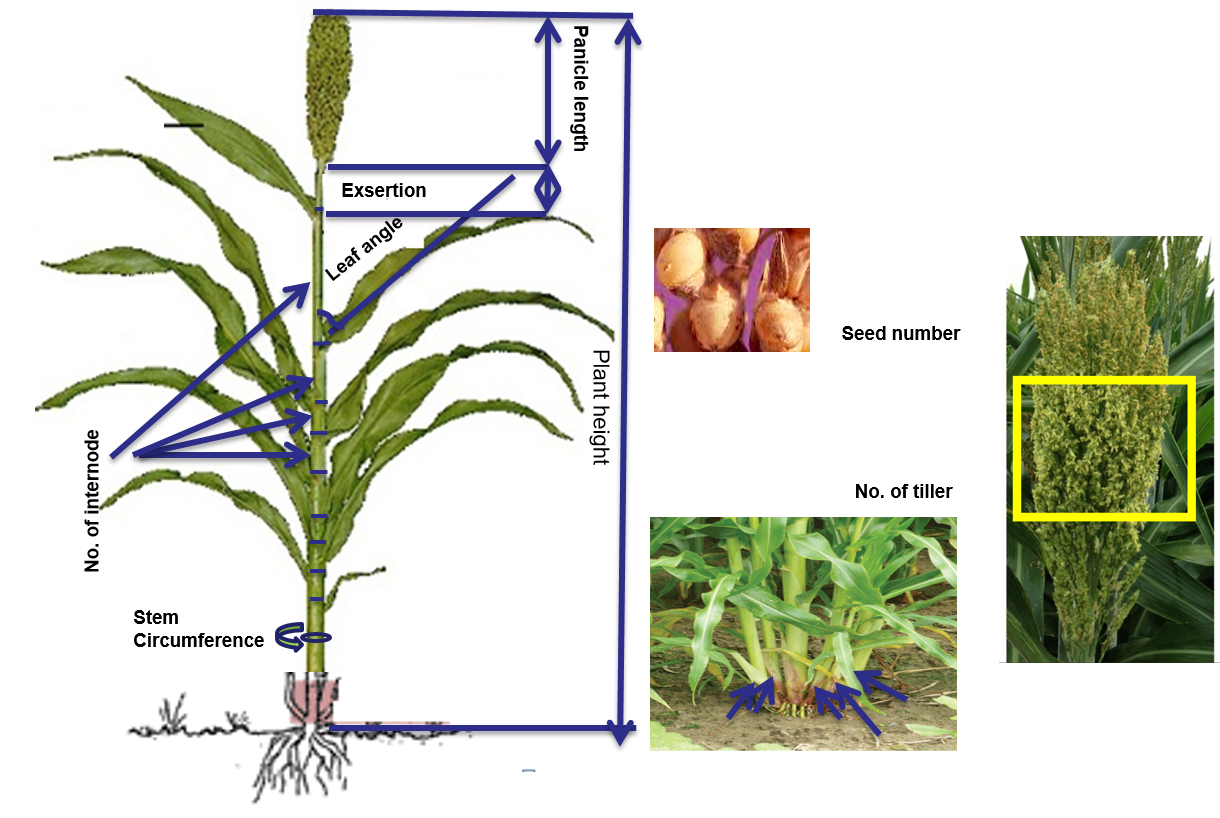Plant architecture
Several hormones are involved in the biochemical and physiological responses that determine plant architecture characteristics highly correlated with biomass yield such as plant height, leaf angle, stem diameter, tillering, number of florets, etc. Brassinosteroids, gibberellins and auxins have the strongest impact without severe undesirable pleiotropic effects. Identifying genes involved in biosynthetic and signaling pathways of these groups of hormones and the effects of alternative alleles will reveal the allelic combination to obtain a particular plant type. Sorghum germplasm offers a vast genetic diversity to dissect plant architecture traits and identify genes/alleles controlling specific characteristics.
We have conducted genome-wide and candidate gene association studies to characterize the genetic architecture of plant height, stem diameter, leaf angle, exsertion, panicle lenght, internode number, flowering time, seed number per panicle and tiller number using the Sorghum Association Panel. We have discovered genomic regions and candidate genes that are currently being validated. With the need to produce more food, feed and fuel in the same or smaller area, and considering climate change, manipulating genes to create desirable plant types in a shorter period of time will be essential in breeding programs. Sustainable production of biofuel will also require using fewer inputs, in more marginal lands, and therefore producing a specific sorghum plant for that production system will be very valuable as well.

